Western Cuba is dominated by the spectacular scenery and tobacco plantations of Vinales Valley and the rolling hills, forests and walking trails at Las Terrazas National Park and Soroa. Along the coastline lie beautiful, unspoilt archipelago islands such as Cayo Jutias and scuba diving at Maria La Gorda close to the very far western tip of Cuba.
Explore and recharge in these stunning landscapes and take part in various activities, including cycling ,hiking , horse-riding , birdwatching , caving and diving, whilst enjoying the local home cooked cuisine and welcome of Cuba’s incredibly friendly country folk.
Vinales Valley preserved by UNESCO as a World Heritage Site lies approximately 2.5 hours’ drive from Havana along one of Cuba’s famous empty motorways. Vinales is also home to the tobacco plantations that produce Cuba’s world-famous cigars and the unique limestone mountain outcrops that rise almost vertically out of the valley floor, known as ‘Mogotes’.
The Mogotes are small limestone mountains, relics from the Jurassic period and they rise from the fertile valley floor up to 300 metres in height, creating a spectacular and unique landscape only seen in a few global locations. Some have rounded tops and feel almost muffin like, others are flat topped, craggy and daunting. Some host deep limestone cave systems, with the caves of Santo Tomas being the largest in the Americas.

The scenery is at its best at sunrise or sunset where the views are amazing and the valley is so peaceful and quiet. Its possible to enjoy the views on our choice of walks, rides or on horseback with our sunrise walk to the Los Aquaticos mountain community being a real highlight. For the more intrepid hiker, a fully guided hike can take you through the sub tropical forests to the summit of a Mogote.

The incredibly rich fertile soils assisted by the perfect sub tropical microclimate aid the production of the very best tobacco leaves in the world. Tobacco is grown, harvested and dried in the valley, with drying houses seen everywhere.
The “Campesino ” local farmers are easily spotted as they are invariably older ,the younger members of the local community tending to head to Havana or even abroad. Wearing faded green army style fatigues and wide brimmed sun hats, they work tirelessly in the plantations, tightly gripping a cigar in their mouth as they work. Modern farming technology has not reached Vinales as yet and they work using ox drawn ploughs and simple hand made tools, handed down generations.
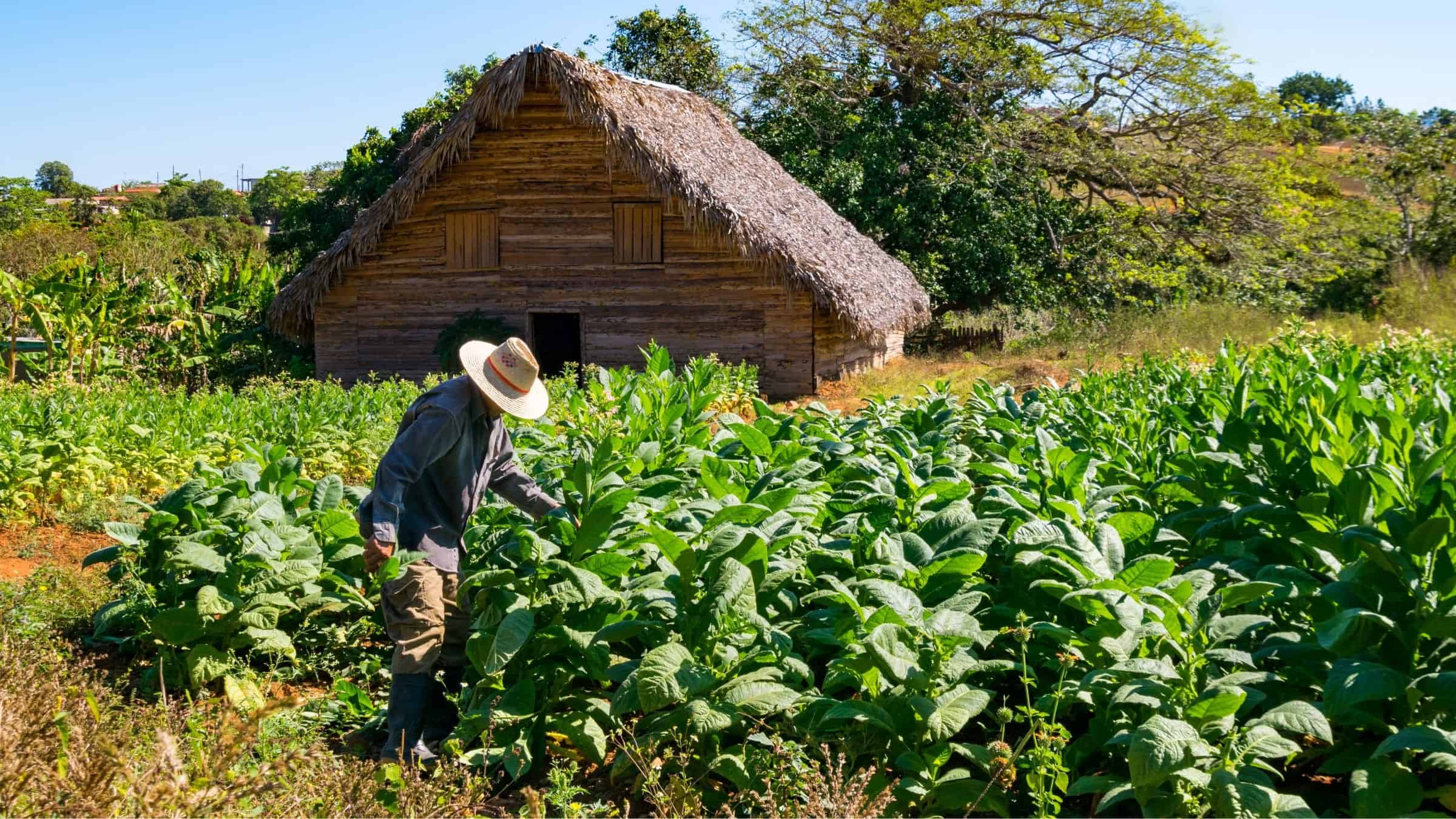
Our range of activities in Vinales allows the chance to meet and engage with the farming community and learn more about the traditional tobacco growing processes. Chat to the farmers about their lives over a “muy fuerte” coffee and visit the drying houses full of pungent leaves. For those with a more dedicated interest or passion for the cigar world, we can arrange specialist visits to some of the famous plantations that have been producing cigars for centuries.
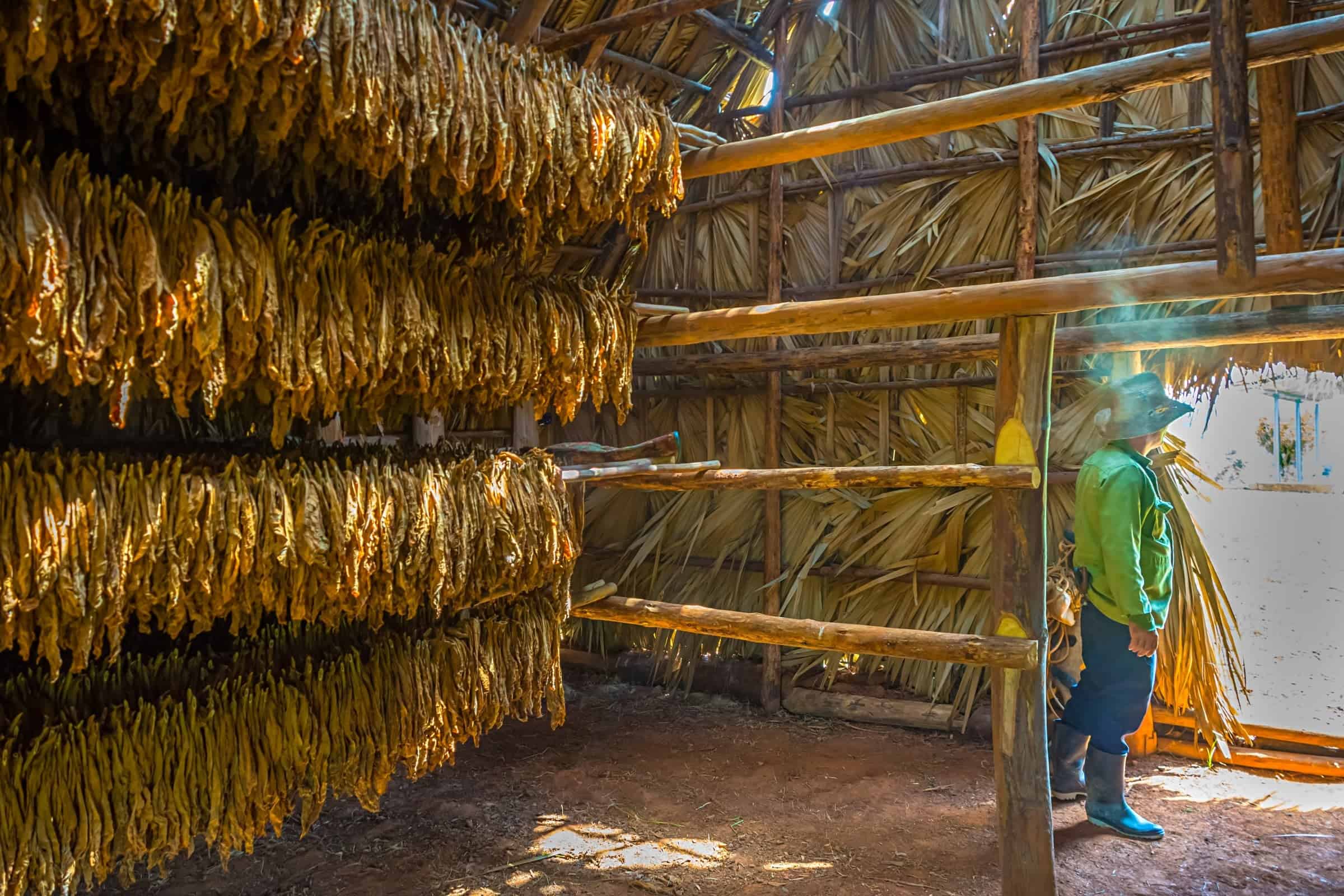
The delightful small town of Vinales, nestles under the protective watch of the towering Mogotes and has a very laid back atmosphere where time certainly moves slowly here under the tropical sun. The cosy central square is dominated by a sweet little church and in the corner a Casa De La Musica can be found, a common and popular venue in all Cuban towns and cities. Here live music is played most nights including the Cuban equivalent of “open mic ” nights. Visitors are greatly welcomed to come along and enjoy the music and naturally most end up dancing the night away.
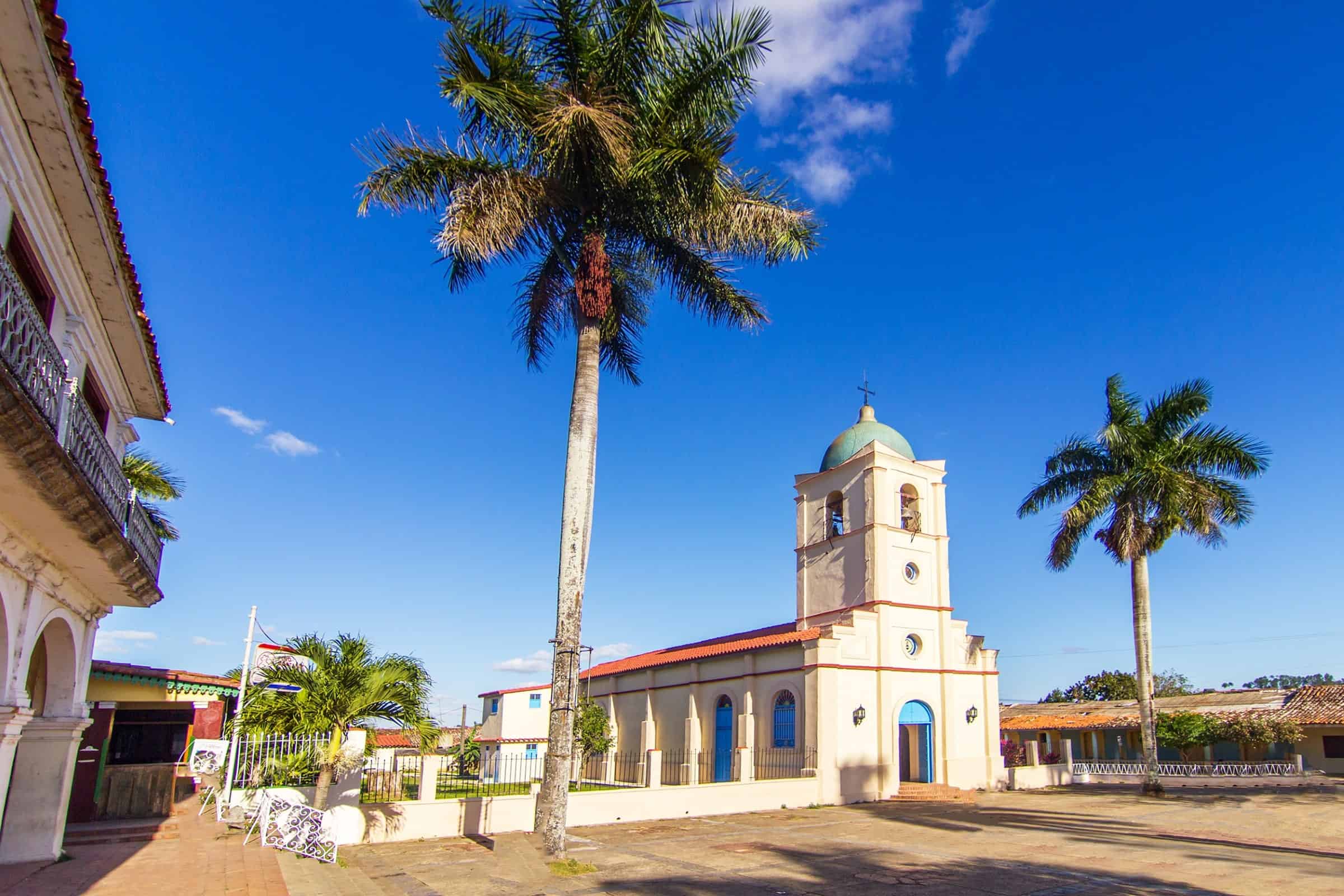
Vinales street life is so absorbing, with local ” Campesinos” trotting along the potholed streets on horse and carts, ancient Chevvys squeak and bounce along, puffing out fumes and filled to the extreme with local families and their neighbours. A daily ritual of happy and very chatty schoolchildren flock down the street in their identical uniforms, enjoying a simple life with mobile phones mostly absent.
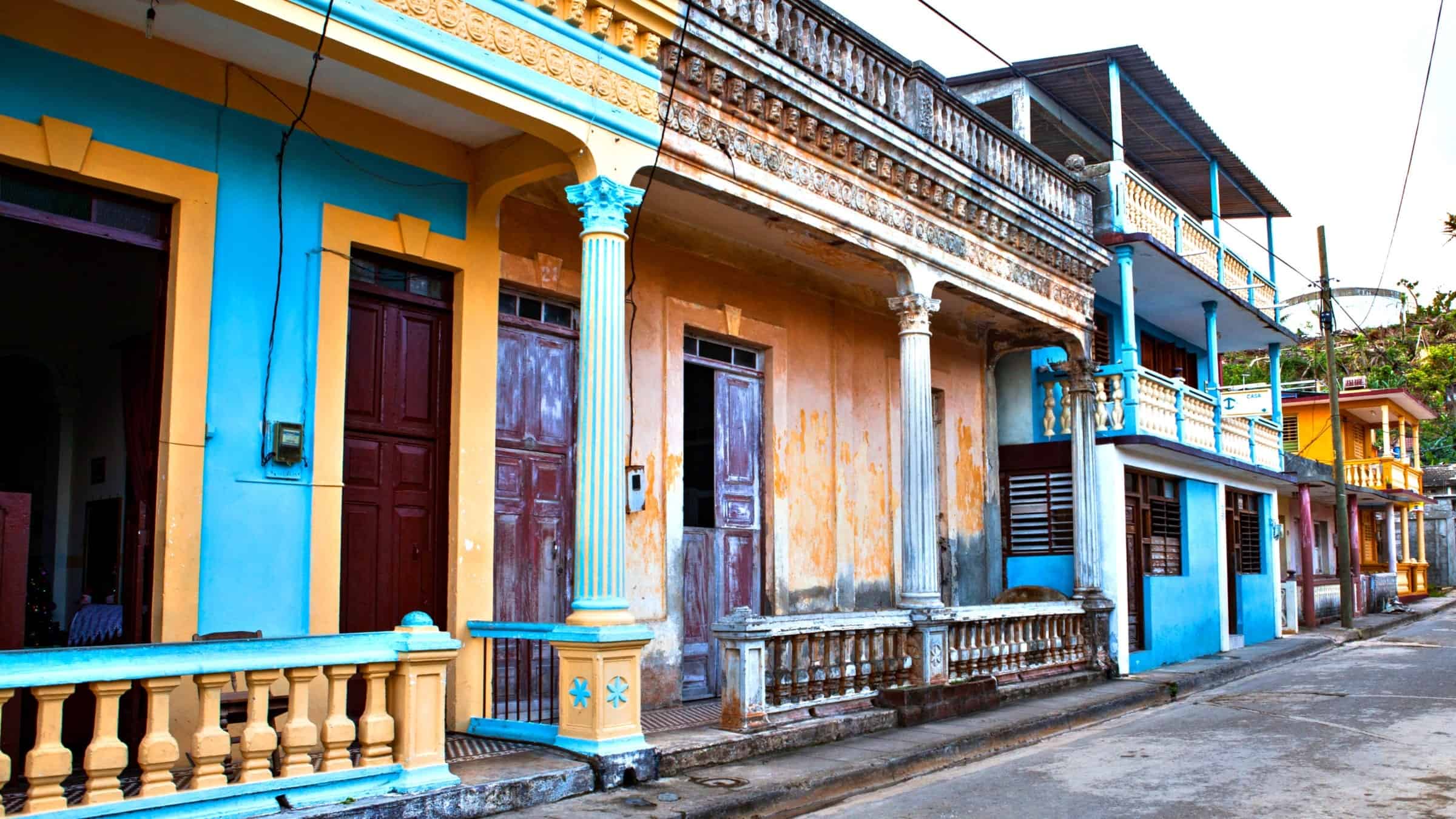
Visitors can enjoy a rising number of privately owned restaurants and bars serving honest, home cooked fayre and can browse through artisan markets or just relax in the sun and watch the fascinating and varied street life.
We strongly recommend a few nights to enjoy Vinales, longer for those seeking to enjoy walking, cycling trails or horse-riding through the valley. For many the relaxed way of life here is an antidote to the fast paced life of home, so rest awhile and take life at the same pace as the local Vinales folk.
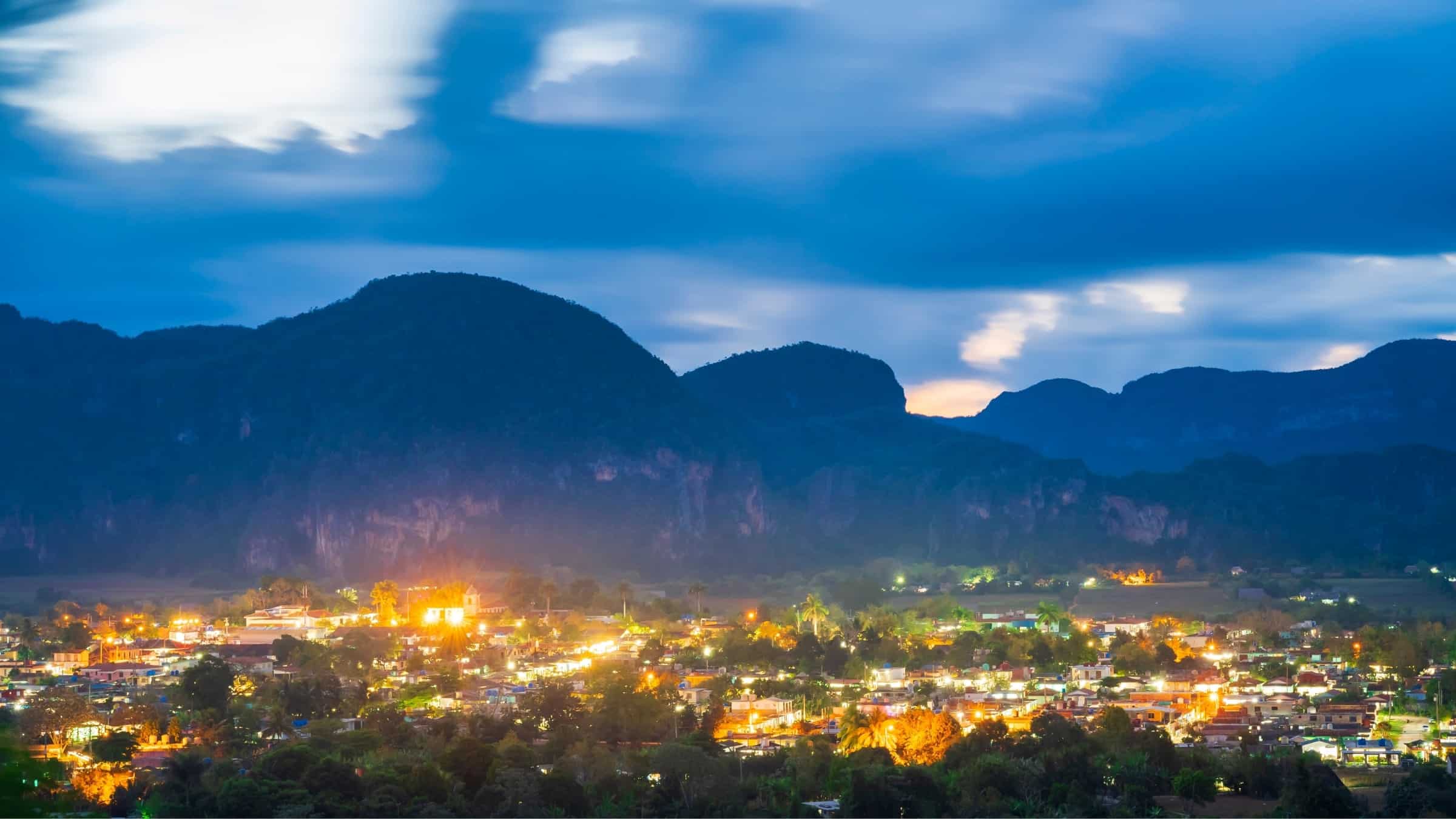
Approximately 90 minutes drive from Vinales through the countryside takes you to the delightful small archipelago island of Cayo Jutias. Here you can wander along the beach and find a quiet spot to spend a few hours in the sun or swim in the clear ocean.
The island has short trails through the mangroves that lead you to totally isolated areas of the beach including Cayo Megano, where in the waters you can often see hundreds of large starfish! Whilst its not possible to stay overnight here, a visit for the day is highly recommended.

Only an hour from Havana and at the gateway to Western Cuba lies Soroa and the main highlight are the Botanical Gardens, housing the largest collection of Orchids in the Americas, in a total collection of approximately 20,000 plants and trees. There are 130 endemic species of Cuban orchids, as well as over 700 species from across the globe and specialist guides are available for touring the Gardens.
There are a number of walking and birdwatching trails in the area, with one easy walk visiting the impressive waterfall known as the Salto del Arcoiris (Rainbow Falls), where its possible to take a cooling swim in the natural pool.
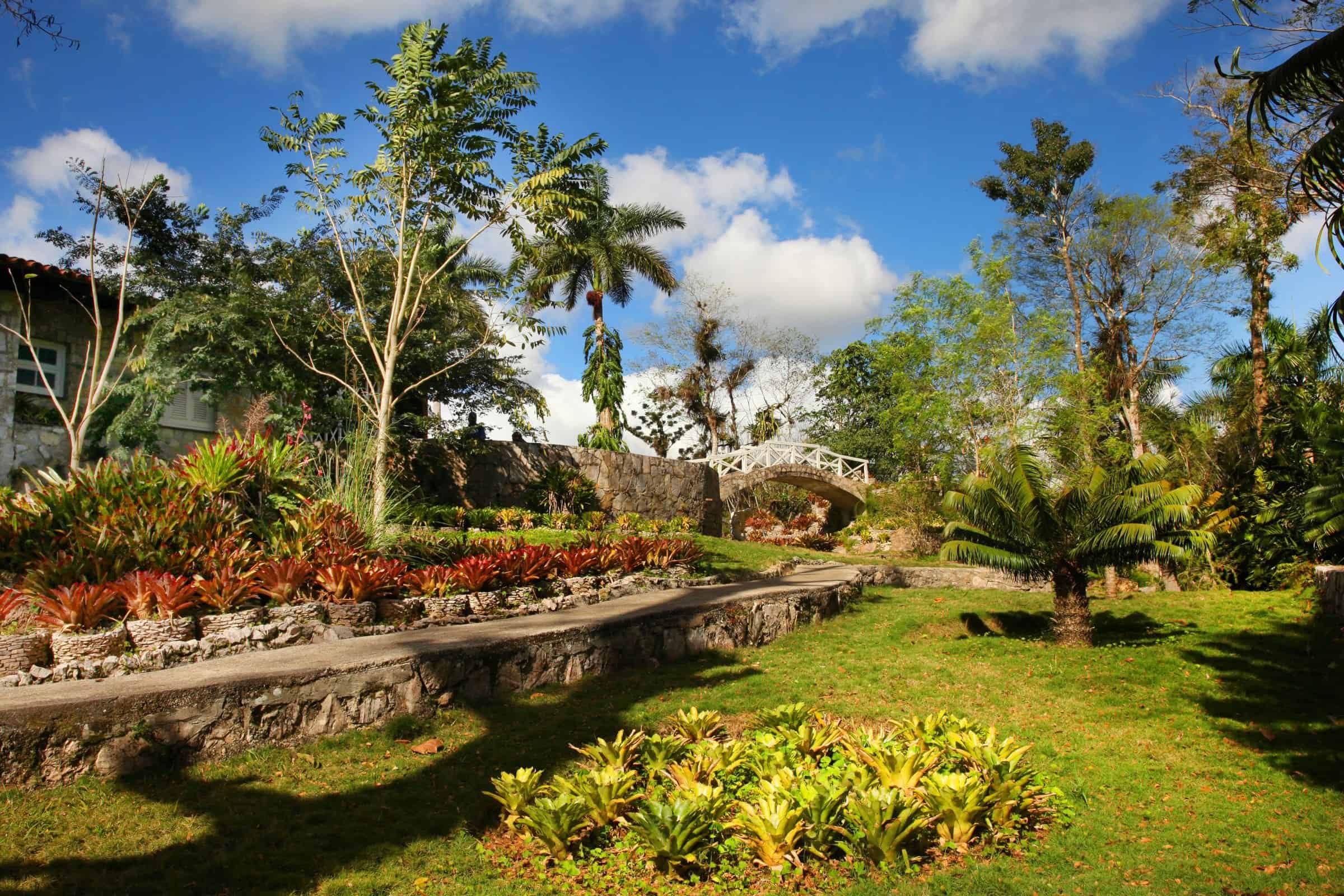
The Las Terrazas National Reserve emerged in the 1960s when Fidel Castro had the visionary idea at the time to engage in a major sustainable agricultural project in the Sierra Del Rosario mountains only an hour from Havana. This involved a terrace style reforestation programme where over 1000 km of terraces were created on the mountain sides and 6 million cedar, mahogany and hibiscus trees were planted.
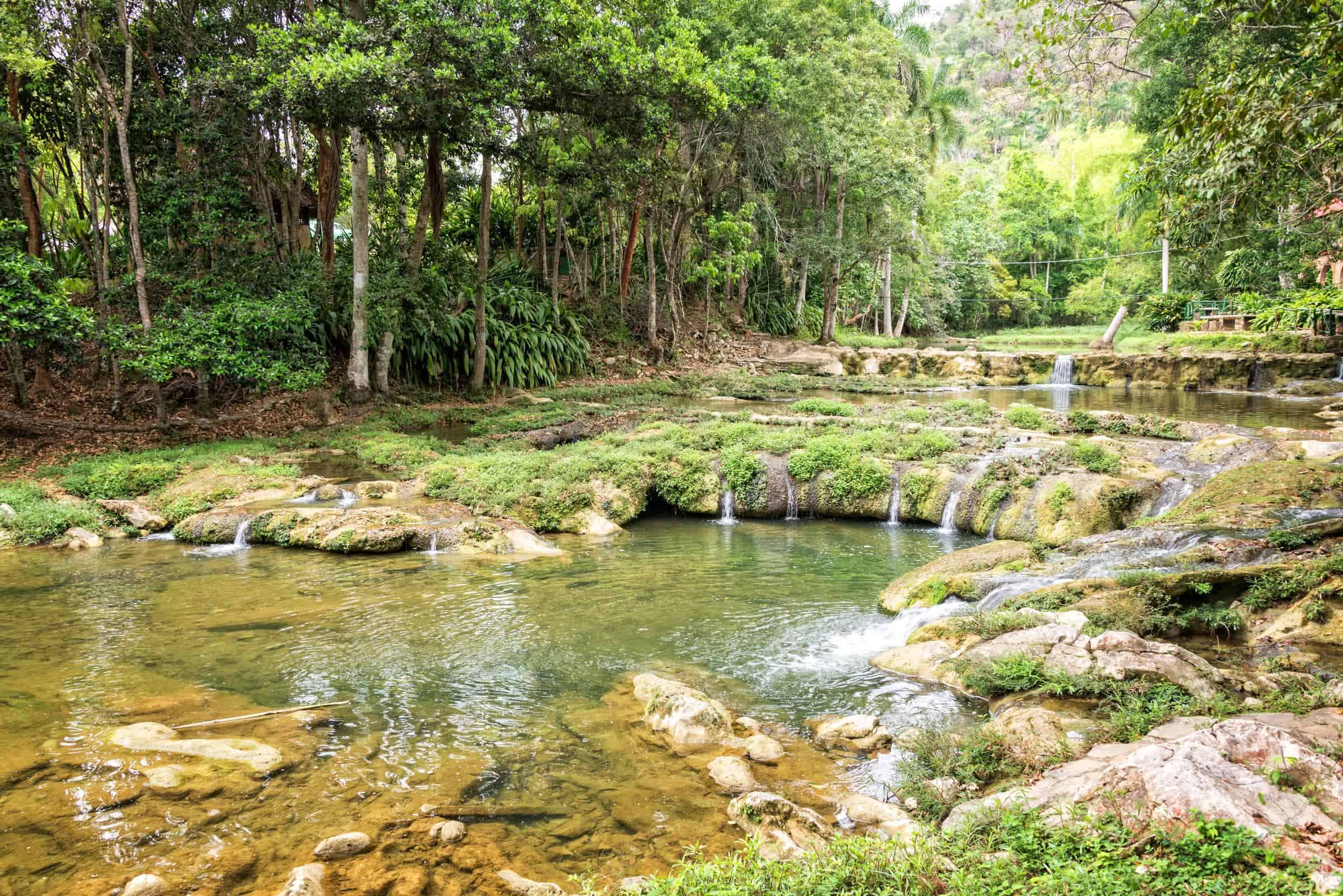
Additionally major planting projects of grapefruit , mandarin, avocado and papaya trees were carried out by a local community of farming families. The community live overlooking Lake San Juan and have now been joined by musicians, artists and academics who enjoy the natural beauty of the area.
The birdwatching opportunities are excellent, with over 175 species of bird making the reserve their home and specialist ornithological guides are available for dedicated trails. There are a number of hiking opportunities including climbing Taburete Hill, the former training area for Che Guevara and his Revolutionaries. Also swim in the picturesque river, visit the restored coffee plantation buildings and enjoy the restaurants and artisan stalls in the community where many creative locals make lovely artefacts from recycled items.
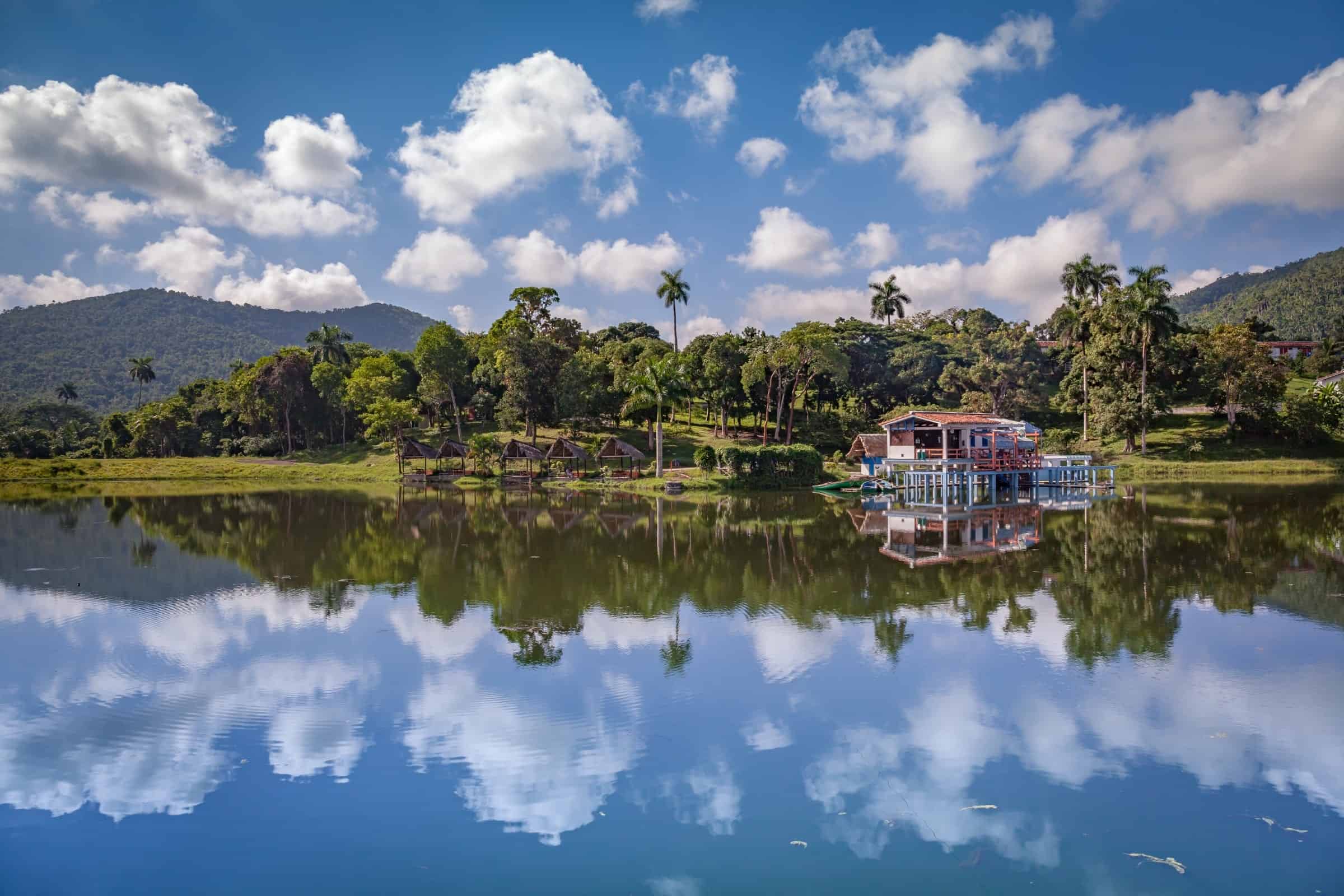
Finally for those looking for some off the beaten track experiences or world-class diving then head to the far western Guanahacabibes Peninsula. Here lies the dive base at Maria La Gorda offering some of the best diving locations in Cuba with up to 50 protected sites and abundant underwater life with vertical walls , tunnels , caves and the remains of Spanish Galleons.

The hotel here is very simple and dedicated to the diving community and the local area can be explored from here. This includes numerous virgin beaches , where in summer months various species of turtles come ashore to lay eggs , mangroves ,woodlands and the lighthouse and cave system at Cabo San Antonio represents the far Western tip of Cuba .
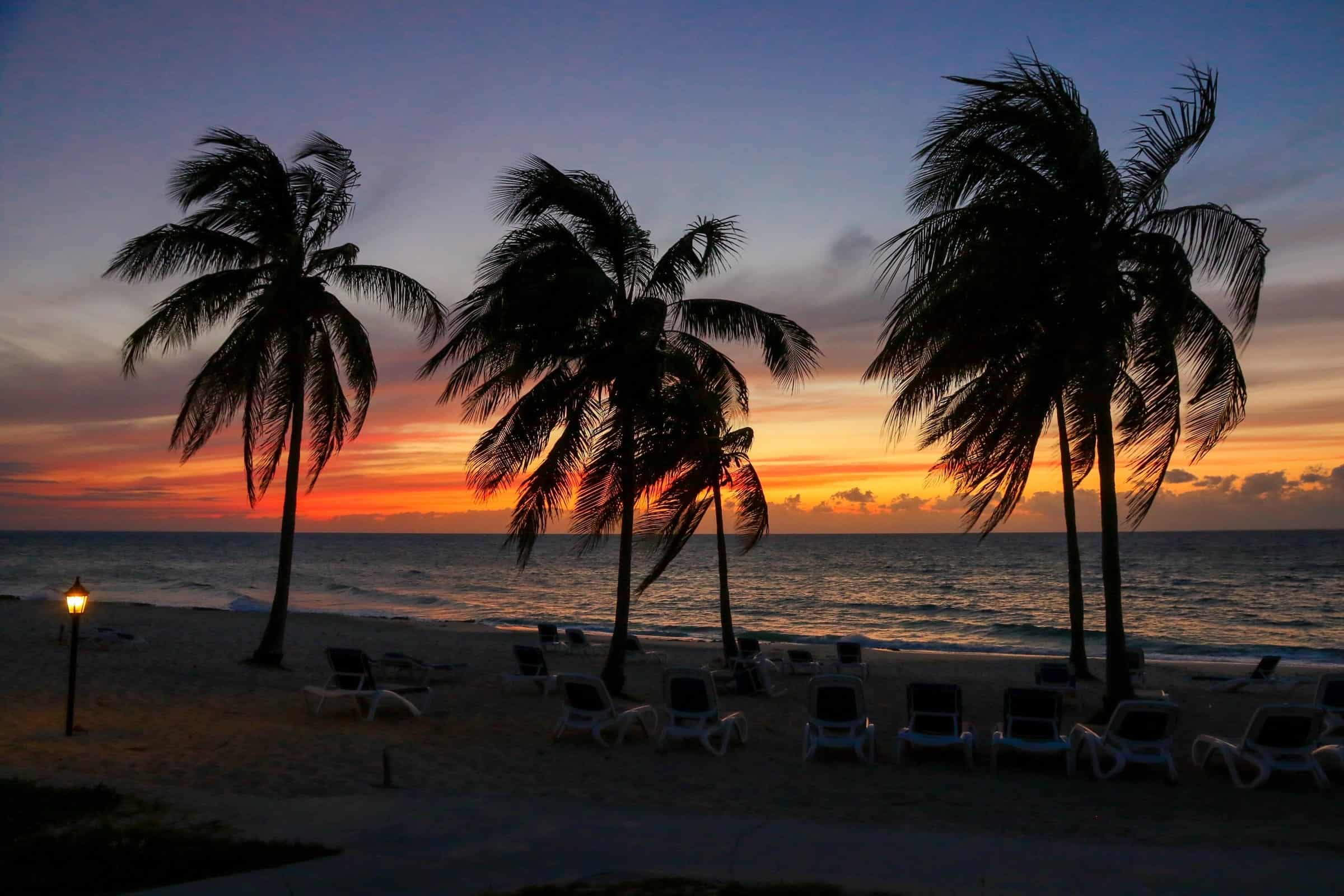









Follow us online